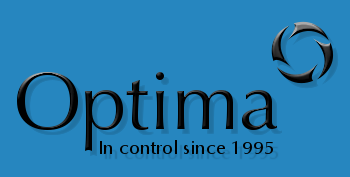Optima Control Solutions Ltd. applied Siemens Automation and Drives equipment for the complete upgrading of a high speed lithoplate cut-to-length facility. The operators of such plants face a bewildering choice of options that can involve large variations in cost and reliability. The huge capacity of a single line means that a solution needs to be successful as any shortcomings have a high impact on output. Despite the short access times available, industrial controls and systems specialist Optima, completed a high quality Jagenberg Sheeter refurbishment for Kodak (Formerly Kodak Polychrome Graphics).
Kodak Ltd. serves more than 4,000 customers in the UK graphic arts industry. The company provides one of the broadest product and solutions portfolios available in the graphic arts industry today. Products include conventional lithographic plates, thermal plates for computer to plate solutions, Kodak branded graphic arts films and digital, inkjet, analogue and virtual proofing products, as well as workflow solutions and colour management tools.
The UK manufacturing facility, at Morley in Leeds, produces rolls of photosensitive aluminium sheet and a wide variety of cut-to-size plates for lithographic printing. The high-speed cut and stack lines were unable to meet the growth in demand and increased capacity was essential. Optima carried out an assessment of the options available for Kodak, and concluded that the most economic solution would be to completely upgrade the controls of the older production line. Although renewal was considered, a much lower cost solution involving a complete controls upgrade, using the latest technology from Siemens, met Kodak’s key objectives of improved throughput and quality, increased flexibility and reduced waste.
The production operations covered by the upgrade are the handling of the photosensitive aluminium roll, the decoiling or flattening of the sheet and the subsequent high-speed cutting of plates. The interleaving of plates with tissue paper, the final stacking operation and the removal of all waste from the line are also an integral part of the new process control system. The stacked plates are later wrapped and boxed prior to dispatch to customers.
The production process is now fully automated and includes the continuous assessment of all web transport variables that affect movement and production systems. To maintain the highest quality possible, corrective adjustments are initiated immediately to operating parameters that are outside specified limits, including such difficult items as tension control, alignment and cutting accuracy. The paper interleaving operation, in which fixing is done electrostatically charging the plate, is particularly important as the photo-sensitive plate needs to be protected against mechanical damage during the remaining production stages and during delivery to the end-user.
At the point of use, each plate is printed with the image to be reproduced and is then mounted on a printing press. Dimensional accuracy is essential especially for the many plates that are folded onto high-speed roller presses. Although the cut length of plates varies, the typical cutting accuracy of +0.04% on length, with diagonal equality, is extremely stringent. In any highly competitive market, increased demand for products usually means that quality is lost due to increased line speeds. However, at Kodak, the reverse is true as modest investment in Siemens control technology has resulted in improved capacity and quality.
The process management was delegated to a Siemens S7-400 series PLC with a distributed control system using a Profibus field bus network. A key element of the successful solution engineered by Optima was that it avoided any alteration of on-machine wiring. Intelligent function blocks, at each location, dealt with all data retrieval and incoming power management and control information.
The project has also benefited from Siemens variable speed drives. New lithographic plate production plants invariably use AC motors with vector control but Optima recognised that with improved controls it would not be necessary to replace the existing DC motors. These had been well maintained and had years of useful life ahead. The decision to retain these drives considerably reduced the project cost and has been justified by the exceptional cutting accuracy that is currently being achieved.
Another benefit of the application has been the dramatic reduction in waste. As the coiled rolls of photosensitive plate are produced the plate is subject to a very rigorous quality control inspection. All blemishes are marked by the application of a machine-readable signature that indicates the limits of damage. The lithoplate production process recognises the signatures and plate cutting is automatically adjusted to avoid damaged areas. Prior to the controls upgrade, waste lengths could be almost as long as the production plate but this is no longer the case. The process can now handle a variety of cutting sizes simultaneously and stack each size of paper-coated plate separately. As damaged lengths are recognised, the cutting size is automatically adjusted to default length maximising the usage of undamaged plate. In practice, it has been found that the use of only two sizes delivers a several fold reduction in waste.
The performance-based approach adopted by Kodak has enabled them to take advantage of the massive flexibility of Siemens latest controls technology and drives expertise. Everything except the production machines motors and on-machine wiring was replaced which has resulted in a first class solution, for a fraction of the costs being incurred elsewhere. Most importantly they now have a plant that is delivering plates that are cut well within the specified limits and waste has been massively reduced.
